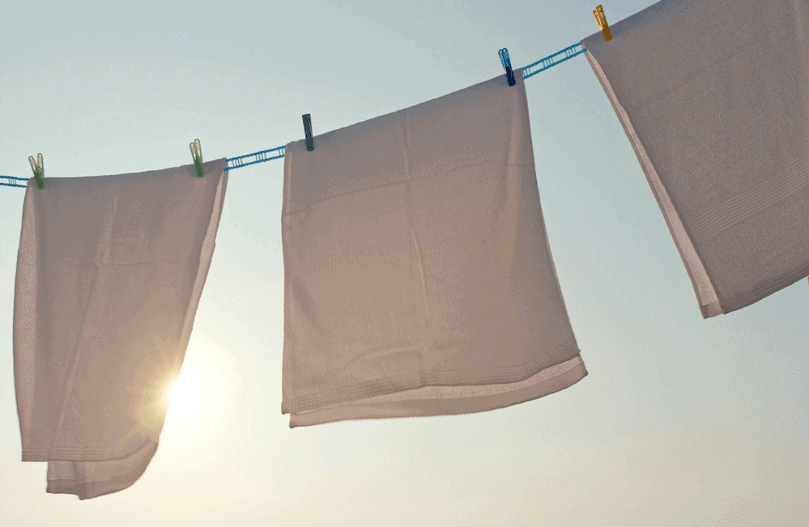Why Should You Wash New Clothes Before Wearing Them?

Top 5 Reasons To Use Commercial Laundry Services
September 6, 2022
Woollen clothes: Care Tips and Mistakes to Avoid
December 5, 2022The excitement of wearing new clothes is always the same irrespective of age or gender. New clothes are so picture perfect. The colour is right, the texture is soft, and fall of the fabric is right, and most importantly it feels good. The first ever thought that we get is, “let’s wear it, don’t know if, after washing, it will have the same effect or not”.
But is it right to wear your brand new clothes before washing them? Why is it that dermatologists insist on washing your clothes before wearing them?
Before the clothes get placed on the rack of the store, they undergo a lot of processes. The yarn gets cleaned and treated with chemicals to make the fabric long-lasting. Later, the fabric gets dyed, ironed, and treated with chemicals to preserve the colour. Let us see in detail why we need to wash our brand new clothes before wearing them.
It is necessary to wash new clothes before wearing them? Want to know Why?
A. Steps to Take Before Washing New Clothes
Before you rush to throw your brand-new outfit into the washing machine, take a few precautions to ensure the fabric retains its colour, shape, and quality. These simple steps can help you prevent mishaps and increase the longevity of your clothes.
1. Determine if a new garment is safe for washing
Not all fabrics are designed to be machine- or hand-washed. Some garments, like delicate silks, leather, or designer outfits, are better suited for dry cleaning services. If unsure, take the safe route by consulting the care label or opting for professional laundry services near you.
It is advisable to remove these chemicals with a simple detergent wash. Read the instructions on the label before washing the clothes. It usually states the type of water for the clothes and whether they should be machine-washed or hand-washed. Some garments, especially delicate fabrics that need special care, may require gentle handling to avoid damage. To make things simple, you can always opt for organic clothes, which have negligible amounts of chemicals; yet, they might still need washing for various other reasons.
2. Eliminate unnecessary tags
New clothes have ‘tags,’ the ones stitched within the cloth and the other disposable ones that generally have the costs and barcodes. Clothing tags, especially the ones that are additional, should be removed before washing. These tags can deteriorate and may degrade the clothing. The tags that are present on the neck or side seams can cause irritation when you wear the outfit. Before washing, remove any excess or scratchy tags carefully to avoid tearing the fabric. This not only prevents skin irritation but also gives the garment a cleaner look.
3. Read the garment care label
The garment care label is your best guide for how to treat your new clothes. It mentions whether the item needs a cold wash, gentle wash, or dry cleaning, and whether it should be ironed or tumble-dried. Following these instructions ensures your clothes remain intact and look as good as new for longer.
4. Perform a colour bleeding test
Some new clothes tend to bleed colour, especially dark or brightly dyed fabrics. To test, dampen a small hidden section and dab it with a white cloth. If colour transfers, it’s best to wash separately or with similar colours. This is essential to prevent your new clothes from staining others during the first wash.
5. Sort your laundry
Before putting your new garments into the wash, sort them based on colour, fabric type, and washing instructions. Mixing different types of fabrics or colours can lead to dye transfer, shrinkage, or damage. Grouping your clothes correctly is a small step that makes a big difference in maintaining your wardrobe.
B. How to wash new clothes?
1. Soak in warm water:
Soaking in warm water causes the chemicals, excess detergents, extra colour, bacteria or fungi to dissolve in the water and leave the fabric. Washing clothes after soaking in warm water will remove the unwanted additives on the fabric easily. The chemicals loosen up the hold on the fabric which can be washed easily with detergents. Some clothes, if soaked in warm water, might lead to fading of the colour or shrinking of the fabric. Check the label before soaking clothes in warm water, and whether they need to be washed in cold water only.
2. Gentle washing:
Linen, cotton, wool, or silk need a gentle wash to preserve the fabric and keep it looking brand new. These clothes can be easily ruined in the machine, get stretched or fade colours. Gentle wash prevents any damage like stretching, tearing, colour fading or detaching of the decorative material on the fabric. Set your machine to delicate or gentle wash and wash in cold water.
Further reading: Dry Cleaning Clothes: Types of Clothes That Need Dry Cleaning
3. Sun-dry your clothes:
Treating clothes with UV rays is the best method to get rid of bacteria, fungi and mildew. Natural UV sun rays have strong antibacterial properties. Just dry your wet clothes under the sun for a few hours for a day, and your clothes are ready to wear.
Note: Bright colours may fade in the sun. If possible, turn your clothes inside out and then expose them to the sun.
4. Opt for Dry cleaning:
There are materials that you cannot wet wash, like silk, crepe, georgette or leather. Washing might make the fabric shrink, or there can be colour fading. Dry-clean helps to maintain the colour, and fabric strength, remove excess chemicals, and colour and maintain the identity of the outfit. It involves the use of solvents that can protect fabrics from damage that water can do.
It is necessary to wash new clothes before wearing them? Want to know Why?
Conclusion:
To maintain hygiene, look neat and increase the life of an outfit, it is advisable to wash the brand new clothes before wearing them. In case you are running out of time to wash your new clothes you can use professional laundry and dry cleaning services too.




